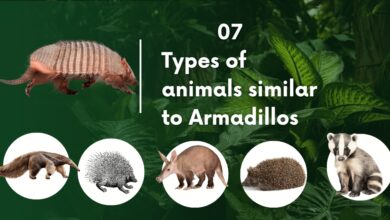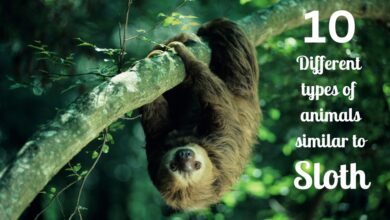8 animals similar to Cheetah’s

8 animals similar to Cheetah’s
Cheetahs, known for their remarkable speed and slender build, share similarities with other wild cats in their predatory instincts and carnivorous diets.
Like cheetahs, many felines exhibit keen hunting skills, agility, and adaptations suited for stealthy pursuits in their respective habitats. While each species possesses distinct physical and behavioral characteristics, they all reflect the enduring essence of the feline lineage, embodying grace, power, and survival prowess in the animal kingdom.
Continue reading to learn about 8 different animals similar to Cheetah’s:
1. African Leopard
The African Leopard, distinct from the cheetah, is renowned for its impressive climbing abilities and distinctive rosette-patterned coat. Unlike the cheetah’s slender frame built for speed, leopards are robust, agile climbers, often hauling prey into trees for safekeeping.
Both share a carnivorous diet, relying on stealth and strength for hunting, yet their hunting strategies and physical adaptations differ.
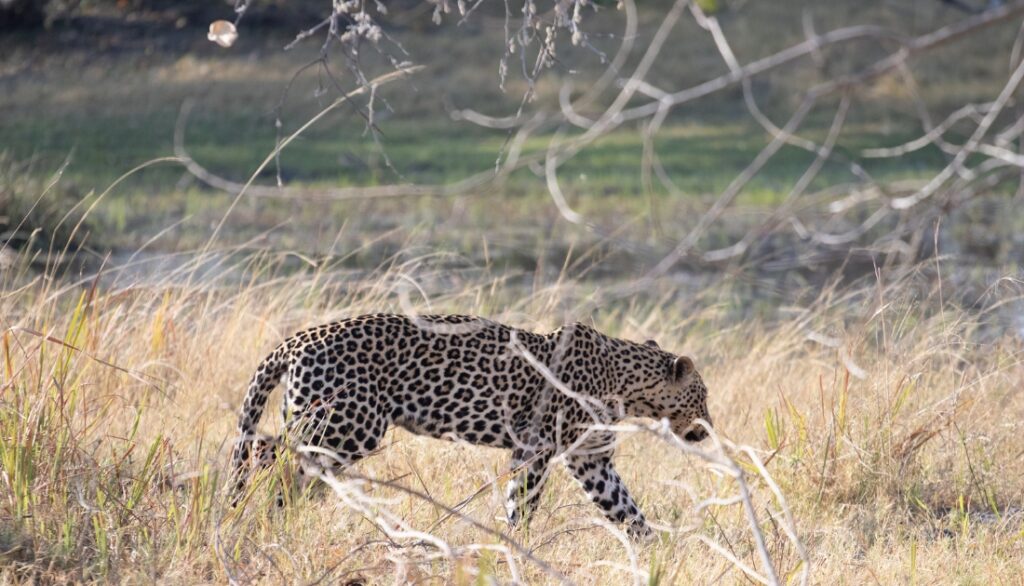
While cheetahs excel in high-speed pursuits, leopards showcase versatility in navigating diverse terrains and employing a broader range of hunting techniques, making each a unique and formidable big cat in the African wilderness.
See Also: How do dolphins communicate?
2. Cougar
The Cougar, also known as the puma or mountain lion, shares some similarities with the cheetah despite differences in appearance and habitat. Both are solitary hunters, relying on stealth and ambush tactics.
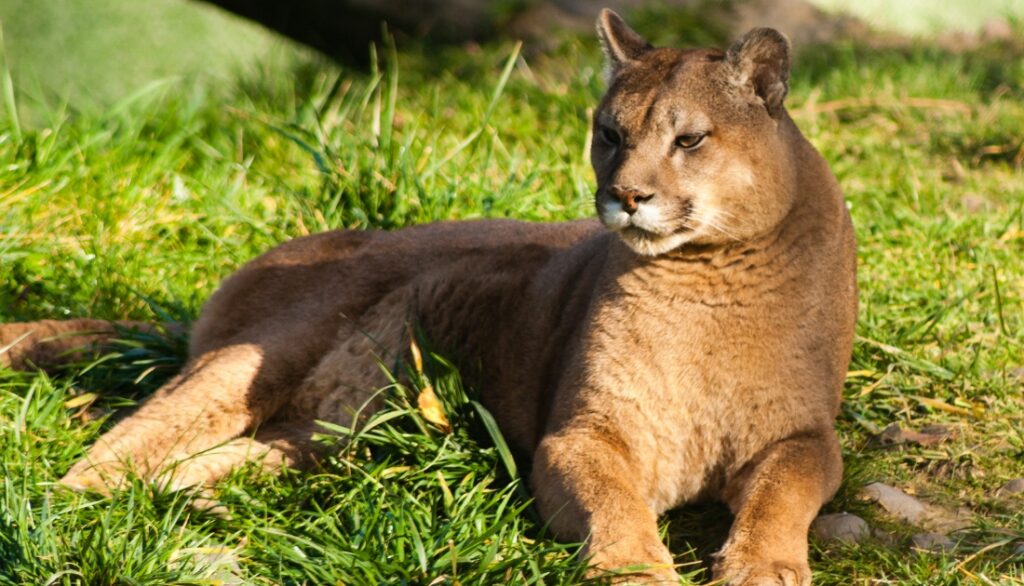
Cougars possess powerful, muscular bodies and are known for their exceptional leaping ability, similar to the cheetah’s prowess in acceleration. While cheetahs primarily inhabit grasslands, cougars display adaptability, thriving in a variety of environments, including mountains, forests, and deserts. These big cats demonstrate the diverse evolutionary strategies employed by felines to thrive in their respective habitats.
3. Caracal
The Caracal, also known as the African lynx or desert lynx, shares some unique features and characteristics with the cheetah. Both species are adept predators with distinctive physical traits. The caracal is known for its striking tufted ears, which resemble the cheetah’s black “tear marks.” Both cats possess slender, athletic bodies designed for swift movement and agile hunting.
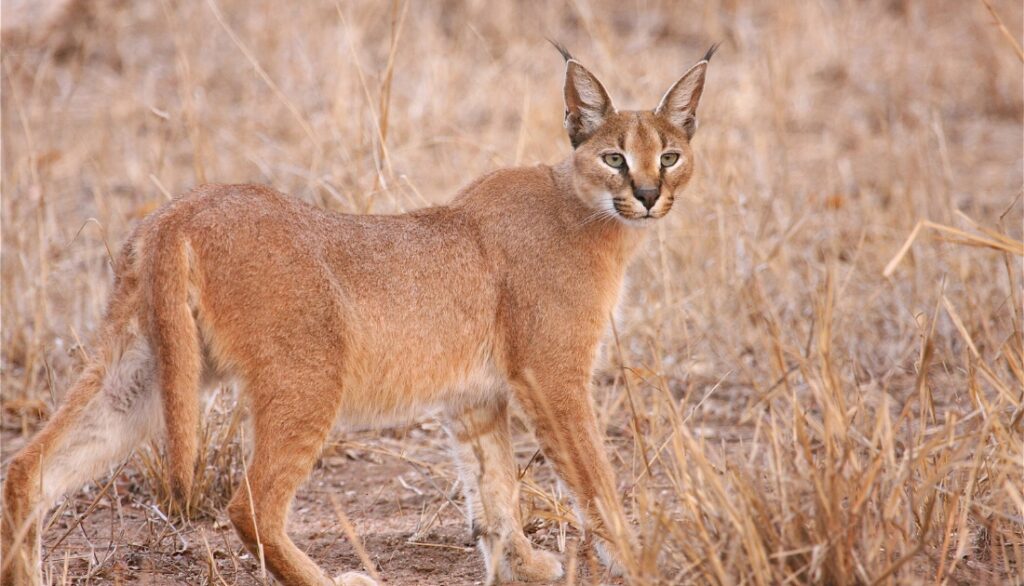
While the cheetah is renowned for its incredible speed, the caracal is celebrated for its exceptional leaping ability. Caracals are known to leap high into the air to catch birds in flight, showcasing a similar athleticism to the cheetah’s swift chase. Despite their differences, both these feline species exhibit specialized adaptations that contribute to their success as predators in their respective environments.
4. Jaguar
The Jaguar, a powerful big cat native to the Americas, shares some distinctions and differences with the cheetah. While the cheetah is celebrated for its incredible speed, the jaguar is known for its robust build and powerful bite, capable of crushing the skulls or shells of its prey.
In terms of similarities, both the cheetah and jaguar display distinctive spots on their fur. The cheetah’s spots are more scattered and singular, contributing to its camouflage in the grasslands, while the jaguar’s spots often form rosettes, providing effective camouflage in the dense forests it inhabits.
Despite these shared features, the jaguar’s hunting strategy differs from the cheetah’s high-speed pursuit. Jaguars are ambush predators, relying on stealth and a powerful bite to quickly overpower their prey. The cheetah, on the other hand, excels in chasing down prey with unmatched speed.
5. Ocelot
The Ocelot, a wild cat found in the Americas, possesses unique characteristics and shares some features with the cheetah. Known for its striking appearance, the ocelot has a beautifully patterned coat with intricate spots and stripes, resembling the cheetah’s distinctive fur.
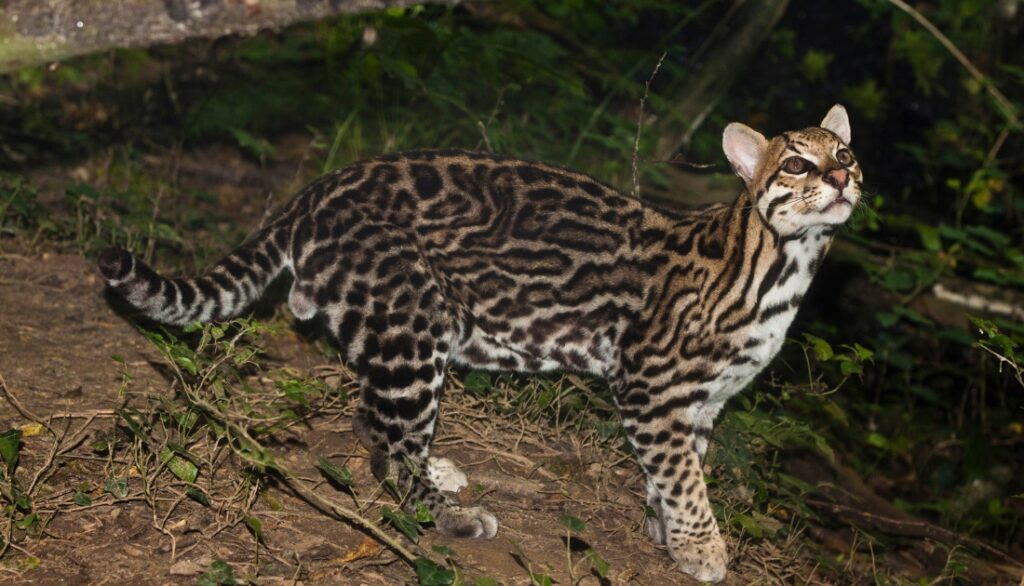
In terms of similarities, both the cheetah and ocelot showcase a slender and agile build, emphasizing their prowess as skilled hunters. While the cheetah is renowned for its unparalleled speed, the ocelot relies on its agility and stealth to navigate through various environments, including forests, grasslands, and swamps.
Despite these shared traits, there are notable differences in their habitats and hunting styles. The cheetah predominantly resides in open grasslands, employing bursts of speed to chase down prey, whereas the ocelot’s adaptability allows it to thrive in diverse landscapes, utilizing its climbing ability to hunt in trees and bushes.
In summary, the ocelot and cheetah share certain physical characteristics, but their unique adaptations reflect the distinct ecosystems they inhabit and their varied hunting strategies.
6. Serval
The Serval, a wild cat native to Africa, possesses distinctive features and shares certain similarities with the cheetah. Renowned for its striking appearance and slender build, the Serval exhibits a coat adorned with bold spots and stripes, reminiscent of the cheetah’s iconic fur pattern.
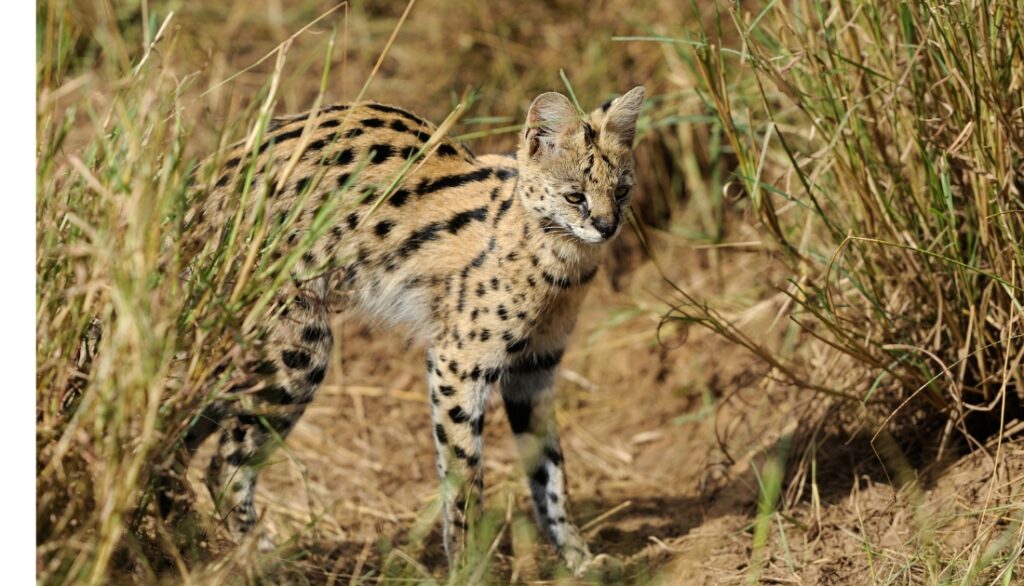
In terms of similarities, both the cheetah and Serval boast long legs, providing them with enhanced agility and speed. While the cheetah is renowned as the fastest land mammal, capable of impressive sprints, the Serval relies on its agility to navigate through tall grasses and dense vegetation, displaying remarkable leaping abilities.
Despite these shared physical traits, there are differences in their habitats and hunting techniques. The cheetah favors open grasslands, utilizing speed to chase down prey, whereas the Serval is often found in various habitats, including savannas and wetlands, where it employs its exceptional jumping skills to catch birds and rodents.
7. Margay
The Margay, a small wild cat native to Central and South America, possesses unique features and exhibits some similarities with the cheetah. Known for its remarkable agility and arboreal lifestyle, the Margay showcases a sleek coat adorned with distinctive spots and stripes, resembling the cheetah’s striking fur pattern.
Similarities between the Margay and cheetah include their elongated bodies, providing them with a streamlined appearance and facilitating swift movement. While the cheetah excels in terrestrial speed, the Margay is well-adapted to navigate the treetops with exceptional leaping and climbing abilities.
Both cats also share a preference for solitary behavior, and their hunting techniques involve stealth and ambush. The Margay primarily preys on birds, small mammals, and insects, utilizing its sharp claws and keen eyesight to secure its meals, similar to the cheetah’s strategic hunting methods.
8. Snow Leopard
The Snow Leopard, native to the mountainous regions of Central and South Asia, boasts unique characteristics and shares some intriguing similarities with the cheetah. Adapted to life in high-altitude environments, the Snow Leopard has a thick, luxurious coat that provides insulation against the cold, resembling the cheetah’s sleek fur in its distinctiveness.
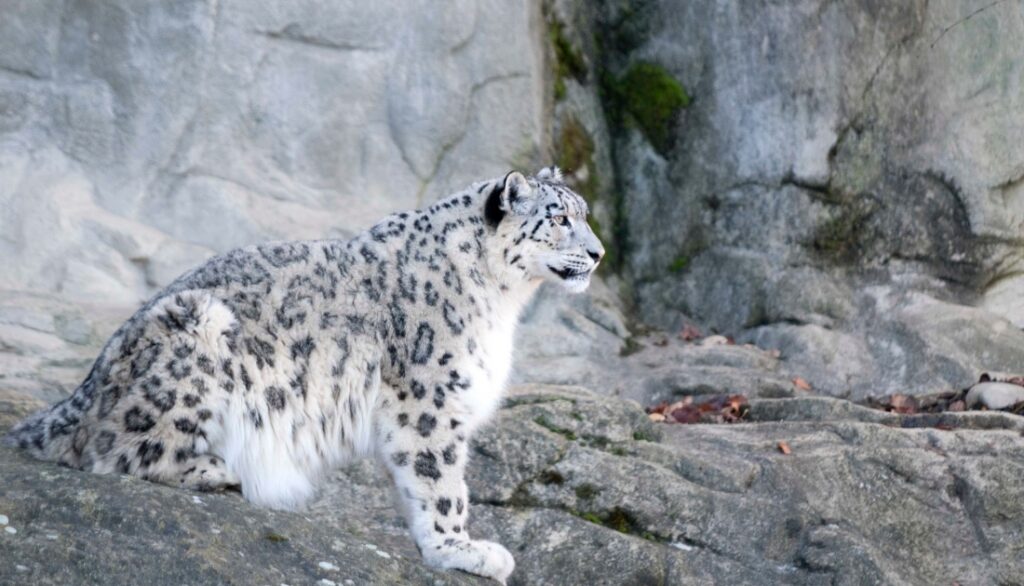
While the cheetah is renowned for its exceptional speed on the plains, the Snow Leopard exhibits remarkable agility in its mountainous habitat. Both cats showcase adaptations for their respective terrains, with the Snow Leopard navigating rugged terrain with ease, using its powerful hind limbs and a long tail for balance, similar to the cheetah’s specialized physical features for rapid pursuit.
Both the Snow Leopard and cheetah are solitary and elusive predators, relying on stealth and camouflage to stalk their prey. The Snow Leopard’s diet mainly consists of blue sheep and Himalayan tahr, reflecting its adaptation to the alpine ecosystems.


